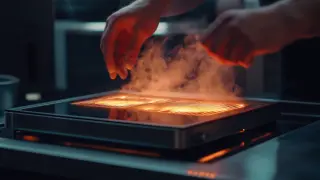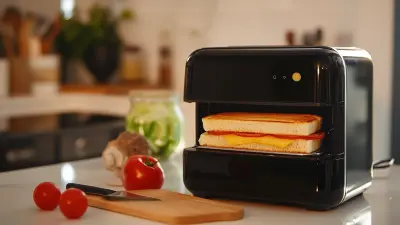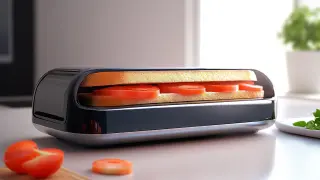- +86-13631182173
- sales@zsqeelin.com
- 8613631182173
The commercial deep fryer has always remained in the core of the food service industry, providing chefs and restaurant proprietors with the capability to prepare fried food-stuff quickly and efficiently. As consumers' preferences change and the culinary scene evolves, global procurement professionals must stay abreast of all current trends affecting the commercial deep fryer market. Recent reports highlight a considerable demand boom, with projections of the global commercial deep fryer market growing at a CAGR of 7.2% during the year 2021-2028. This is largely attributed to the focus on efficient methods of cooking and new frying technologies.
As a leader and one of the best in the catering equipment market, Zhongshan Qeelin Electrical Appliances Co., Ltd. is alert to these trends. Our tech-driven R&D, design, and manufacturing practices ensure that we maintain our status as a trusted supplier of essential kitchen equipment, including electric fryers that fulfill the current culinary demands. In these fast-paced times, it is of immense importance that procurement professionals are aware of the happenings in the current marketplace regarding commercial deep fryers seemingly being equally able to anticipate future happenings so as to make their purchasing decisions in light of operational requirements, and ultimately, consumer preferences.

Significant changes are happening for the commercial deep fryer market with the advent of new technologies to redefine its future. Recent research on a small kitchen appliance segment indicated that demand growth will be observed during the pandemic as changing consumer patterns were enforced. There is growing consumerism towards less complicated cooking. It is heading to become a wider trend which procurement professionals will need to understand when deliberating on commercial deep frying equipment. Along these lines, the technology innovations in fryers are the drivers of this evolution. Next include the energy-efficient frying machine models incorporated with advanced temperature control and oil filtration systems that not only enhance fryer performance but also help in a considerable decrease of operational expenses. Industry reports indicate that these next-generation fryers consume less energy by as much as 30%, giving them a place in the radar of enterprises looking to highlight a green facility without reducing productivity output. In addition, smart technologies integrated into commercial fryers have been a complete game changer. With the possibility of IoT, one can somehow monitor the cooking processes in real-time which assures the perfect frying conditions at demand-heavy locations. This managing on-the-go operation is already piquing the interest of procurement professionals who are after optimization of operations and labor cost-minimization. One must be in a position to catch up with the latest in the technology when the commercial kitchen appliance scenario is fast changing. New frying technologies and their impact on future procurement strategies will be the key determinant for decisions that must be based on efficiency in food service operations.
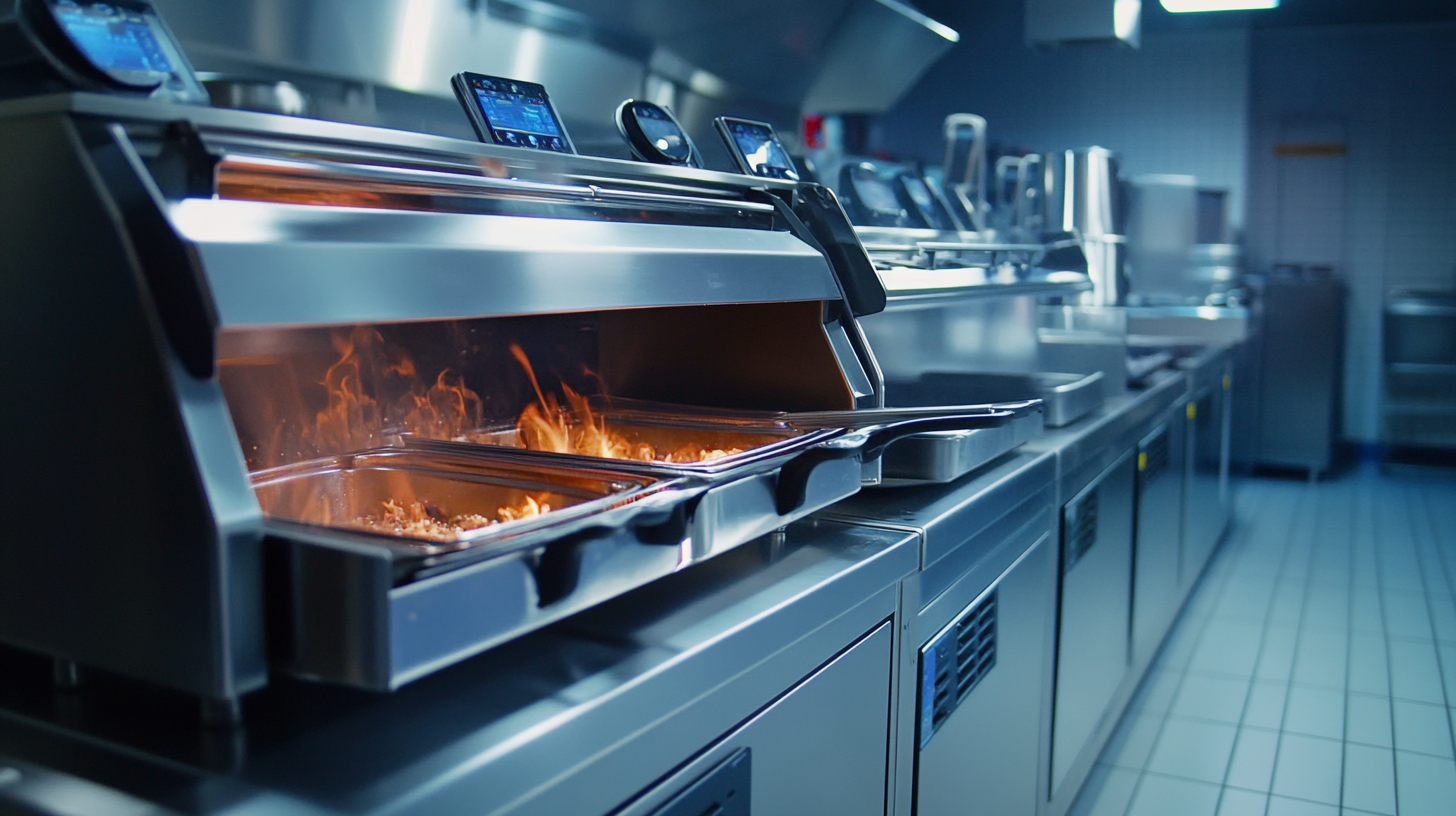
Sustainability has become a big factor in the way manufacturers design and make commercial deep fryers. That said, procurement professionals are looking for equipment that aligns not only with safety and efficiency standards but also with eco-friendly practices. Reducing energy consumption and waste is driving innovation in design and case materials of deep fryers. Manufacturers are now designing energy-efficient models using advanced heating technologies to reduce energy use but not fry quality.
Sustainable practices extend to the fryer itself and into other areas, materials play a significant role in product sourcing and manufacture. Recyclable metals and non-toxic coatings are being used more and more by manufacturers not only because they are better for the environment but also because they appeal to consumers who are more interested in greener products. This saves the environment as well as gives an opportunity for the brand enhancement through green branding and entering new markets by which consumers are heading towards suppliers who are into sustainability.
With the market evolving, procurement professionals must remain well acquainted with the changes in sustainable technology and fryer production practices. Such efforts would go a long way in ensuring that procurement strategies match going trends while doing to the global business line of procuring a responsibility in culinary equipment. In such a fast-moving environment, sustainability is not a trend, but a prerequisite for a successful operation in the commercial kitchen environment in the long run.
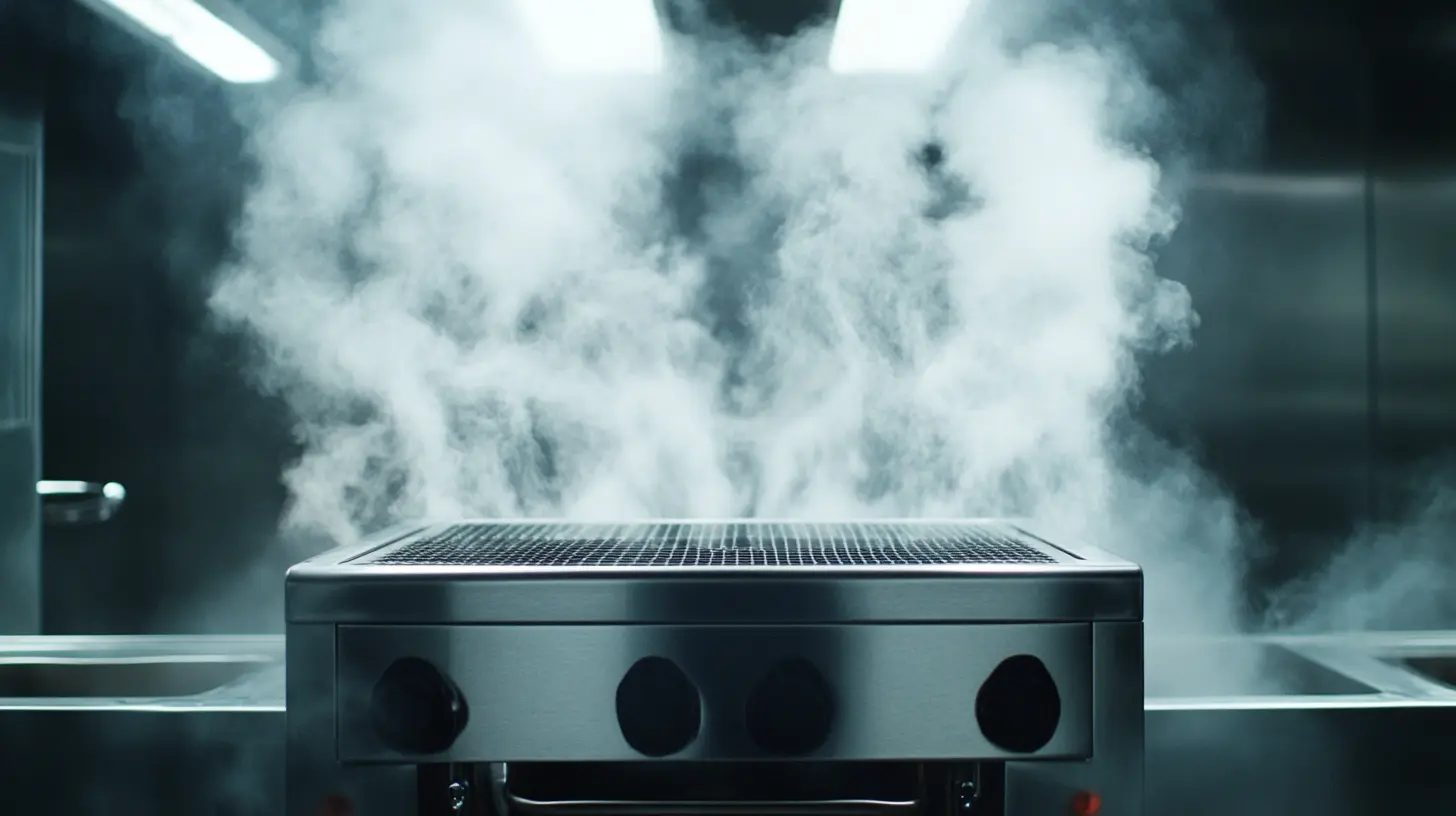
The procurement experts, in the fast-changing cooking and culinary standard, have actually also begun to set as their key selection criteria today's modern deep fryers. The bigger movements toward healthier cooking methods have yet seen the even bigger rise in the name of an air fryer for these few years. They put that crispy crunch with far less oil. Reports suggest that the global air fryer market will touch upon a great $1.2 billion or more by 2027, reflecting all of the health-centric strain moving from kitchen appliances.
Among the essentials, energy efficiency and versatility need to be included as most vital features to consider in depth fryers. Advanced models today boast programmable settings which allow cooks to prepare a range of dishes from deep-fried chicken to gourmet vegetables. Additionally, some fryer models are innovating to connect their applications to mobile apps for greater control of cooking, a function soon catching on with more technologically savvy cooks.
Safety, another significant aspect in today's modern deep fryers. Kitchen accidents are becoming a rather serious business, and manufacturers are attempting to push forward designs that would avoid dangers. High-tech oil filtration systems in conjunction with emergency shut-off are being integrated into the standard, again all pointing to the safety and reliability of the entire system for deep frying. Given consumer pursuit of high-quality convenience for their culinary experience, procurement experts need to be on the lookout for these trends and actually start selecting deep fryers geared to home and professional kitchens.

It is more than the quality enhancement of frying rigorously advanced equipment; indeed, it is nothing less than critical creation for researching the procurement professionals around the globe. As most trends seem to indicate in different industries, they need to find the balance between the two poles on capital expenditure and operational efficiency. By this criterion, advanced commercial deep frying systems with excellent technology must significantly reduce energy consumption besides streamlining cooking processes.
With skyrocketing costs and a string of issues caused to businesses worldwide, all that remains now is a thorough consideration of how modern frying technology will provide long-term savings. For example, some of the newly invented cooking appliances designed with energy-efficient and smart-control components minimize waste, maximize a cooked food's consistent quality, and save time during cooking. It does reflect in simplified terms cost; this time can be rightly put to enhance service quality while using cost benefits over time. Similar to challenges in other sectors, from ensuring safety in low-altitude operations to evaluating healthcare strategies, culinary must consider a very careful risk-benefit analysis.
Technology in the world of deep fryer stands to continue growing, giving pertinent information on the sweet intersection of innovation and economical viability. If procurement professionals are evaluative, the lesson learned prior to this engagement would help them connect optimal equipment to operational needs. In such an environment where every penny must be taken care of, the nitty-gritty of cost-benefit analysis becomes proper in ensuring that every investment is in place with a clear understanding that it will not only improve workflow in the kitchen but also its overall profitability.
The procurement landscape for commercial deep fryers has been undergoing a major transformation mainly attributed to global dynamics affecting the supply chain. The recent report of Fact.MR states that the global deep fryer market is foreseen to expand at a Compounded Annual Growth Rate (CAGR) of 4.7% during the period from 2021 to 2031. This increasing demand for fried food products arising especially from fast food industries is playing the major role, yet at the same time, it reflects the other complexity in global sourcing and delivery logistics that procurement professionals are facing.
The aforementioned one key aspect that entails a different impact on procurement is that the raw material availability and pricing are becoming highly variable due to increasing geopolitical tensions and global disruptors experienced in recent years. For instance, prices of resin, an important input in the production of the fryer components, have increased by almost 30% over the last two years. The sudden change in prices forces procurement in adapting their sourcing strategy, mostly involving a multitude of suppliers across disparate regions to reduce price volatility and interruptions along the supply chain.
Furthermore, sustainable development has emerged as one of the key issues in deep fryer purchasing. The market is witnessing a trend toward energy-efficient and environmentally friendly frying technologies, boosted by governmental regulations and consumer preference for greener products. Deep fryers, as per the International Energy Agency, can save up to 40% on electricity when operated efficiently, which translates to vast savings over time. These changing expectations will require procurement professionals not just to judge performance and price but also to consider the environmental impact of their equipment choices.
More and more, the world is turning to healthy means of cooking, which, in recent times, have been moving toward oil-free frying. It is in this context, however, that consumer demand for healthier cuisines is matched by the proactive consumption approach of procurement professionals with respect to global sustainability goals. Innovativeness in appliance use thus becomes significantly imperative for commercial kitchens due to the fact that most of the consumers who enter this market are health conscious.
From air fryers to other oil-free cooking technologies, the hair-raising impact has been on the faces of people using the equipment in commercial establishments to cook food. Indeed, the equipment now achieves a crispy texture in food with hot air circulation instead of excessive amounts of oil, allowing a significant reduction of fat content therein. Such advancement is quite educative and relevant for persons in business procurement being required to look into alternative sources of quality equipment for filling in the void of market demand. Companies will have much cleaner and healthier credibility if such forms were adapted.
In addition to this, adopting oil-free frying technology is a means of contributing towards improved environmental sustainability. Conventional frying usually takes lots of oil, and it generates a wastage quantity quite significant, which also causes increased disposal. Meanwhile, an oil-free technology creates wastage but keeps food quality consistent. While aglobal procurement professional still looks for such innovative solutions, this trend towards healthier frying alternatives is likely to set the standard for the future of culinary arts as well in terms of operational efficiencies in the food service industry.
Global food history is evolving, and regulatory considerations for manufacturers and users of deep fryers are gaining more importance. The usage of commercial deep fryers falls under various regulations that strive for the guarantee of food safety and health standards compliance. This regulation is even more essential in view of the heightened consumer awareness about acceptable practices of health and safety in food preparation.
Manufacturers must, therefore, comply with strict guidelines regarding the design and operation of deep fryers, and those concerning maintenance and safety. Among these guidelines are safety standards for the materials used in constructing fryers, as well as the appropriate sanitary design of equipment so that cleaning prevents food contamination with pathogens. Furthermore, manufacturers should also be cognizant of any regulations that may call for change with technological changes, for instance, when artificial intelligence becomes part of monitoring and efficiency processes.
Likewise, it is important for users of commercial deep fryers to become aware of these regulations, or else they face the risk of being on the wrong side of the law. Increasing cross-border trade and the formulation of international food safety standards require procurement professionals to remain alert in ensuring that fryer equipment is being procured with cognizance of its conformity with local and international regulatory frameworks. This will serve to ensure food safety and guarantee the smooth operational ability of business in a regulated market.
It has radically changed. Modern consumers mostly cause this in the food landscape. Health consciousness is leading to changes, particularly in the design and working of deep fryers. The Global Industry Analysts have recently published a report predicting a market size of $5.7 billion in global deep fryer sales by 2026, representing a clear shift toward these appliances being more suited to healthier cooking methods.
Today's youth prefer to buy products from the kitchen that resonate well with their wellness aspirations. Celebrities in exhibitions like the 2025 China Appliances and Consumer Electronics Expo (AWE) bring health-oriented small appliances to the market, similar to how Supor has treated its products. The air fryer is an example of new inventions that many people have adopted because of their ability to produce a fried product with a relatively lower-fat level than other frying methods. It also implies that the culture is moving toward multifunctional kitchen appliances that vary in cooking style in modern settings-from compact urban kitchens to open broad layouts.
Market research states that consumers tend to buy products that make life easy in the kitchen but also promote healthy eating as well as cooking. Air fryer is one remarkable cookware that does all these; oil-free frying, baking, and grilling possibilities. It is due to these attributes that distinguished air fryers as a magnificent tendency among young homes; consumer pull thus indeed transforms deep fryers and all associated kitchen appliances.
Key features include energy efficiency, versatility, programmable settings, smart technology connectivity, and safety features such as automatic shut-off and high-tech oil filtration systems.
Air fryers use significantly less oil while achieving crispy textures, making them a healthier cooking option that is gaining popularity in modern kitchens.
The global air fryer market is expected to reach $1.2 billion, indicating a growing trend toward health-conscious kitchen appliances.
It helps procurement professionals weigh the capital expenditure against operational efficiency, ensuring that investments lead to long-term savings and enhanced food quality.
Modern deep fryers can streamline cooking processes, reduce energy consumption, optimize cooking times, and improve food consistency.
Manufacturers must adhere to guidelines pertaining to safety standards, design, operation, maintenance, and cleanliness to prevent foodborne illnesses.
Users should stay informed about local and international food safety standards and select equipment that meets these regulatory frameworks.
Technology enhances cooking control through features like smart appliance connectivity, which allows for better monitoring and efficiency in food preparation.
Key factors include rising safety concerns, health-conscious trends, and the need for energy-efficient and versatile cooking solutions.
By assessing technological advancements, they can align their operational needs with equipment that maximizes performance and offers economic viability.
